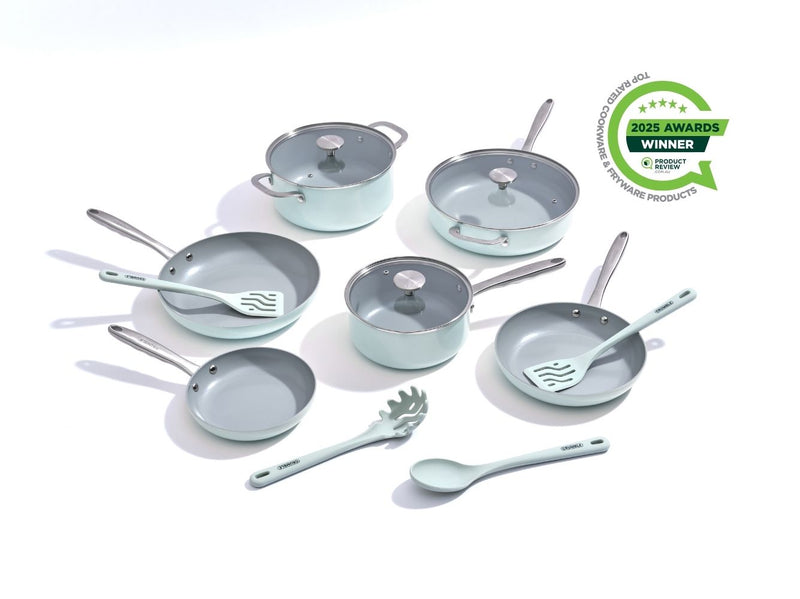
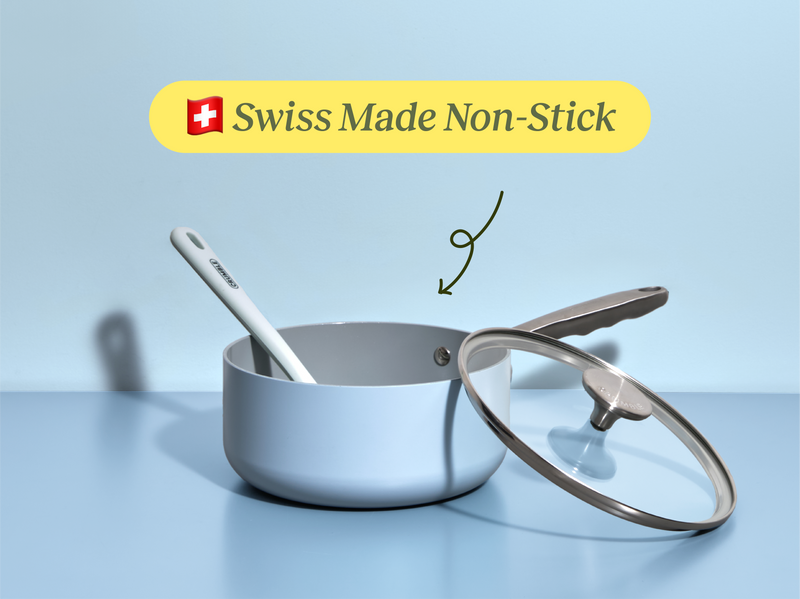
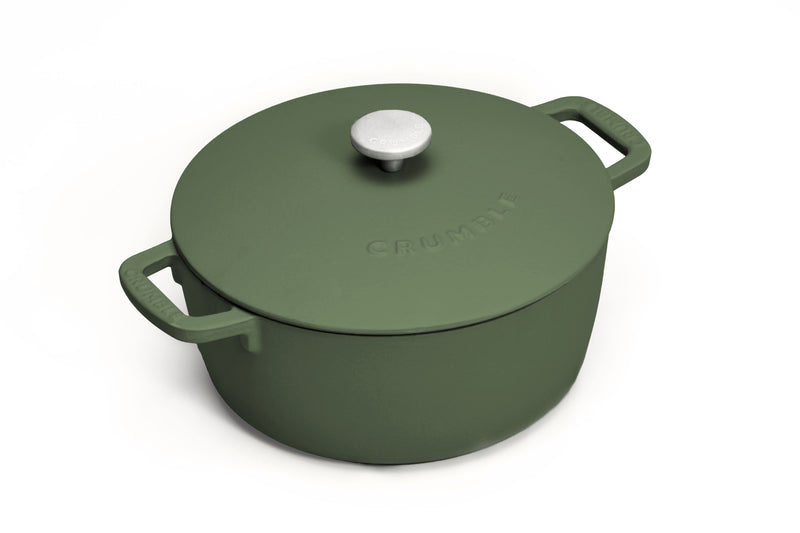
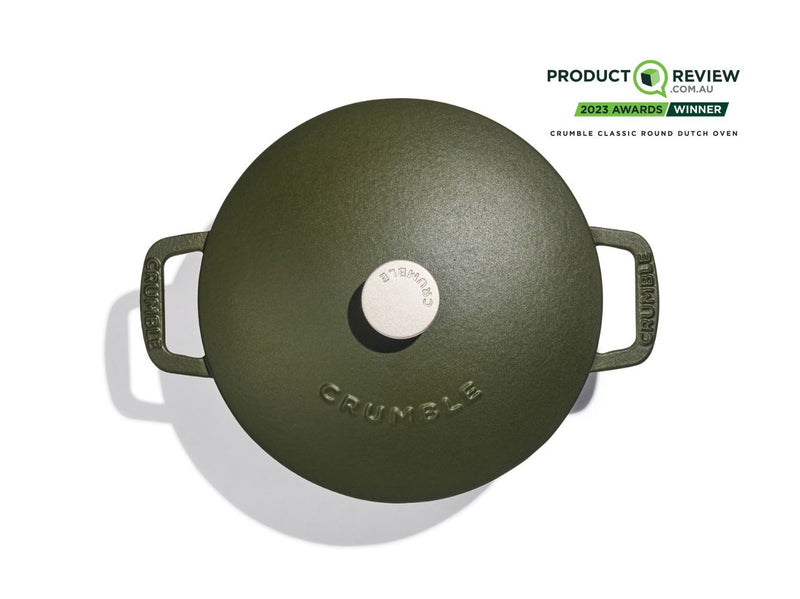



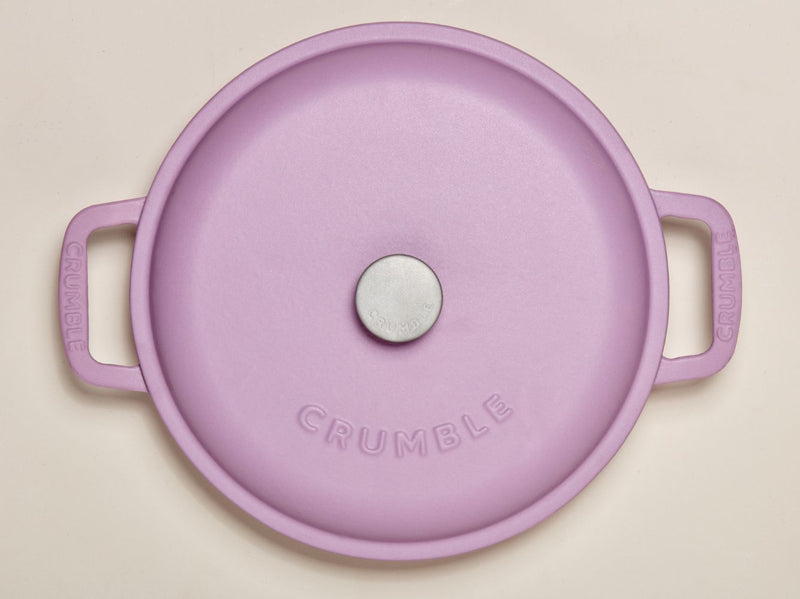


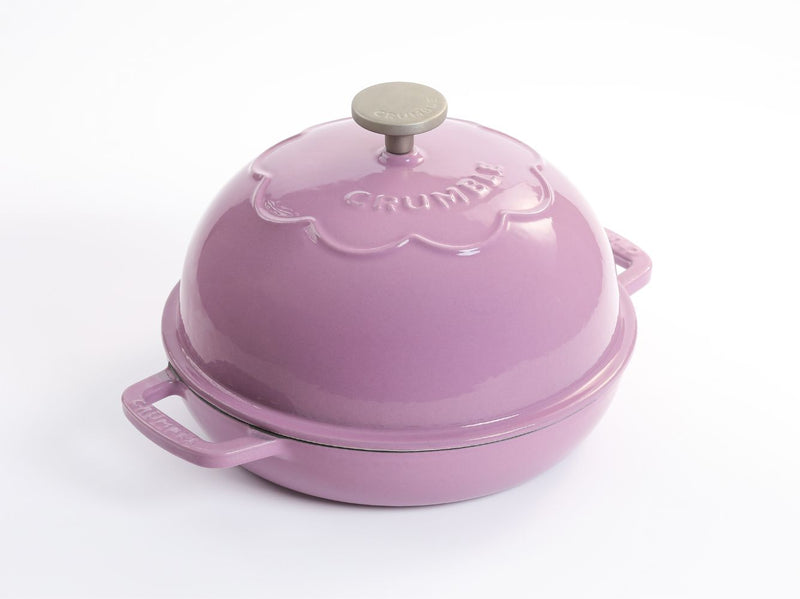
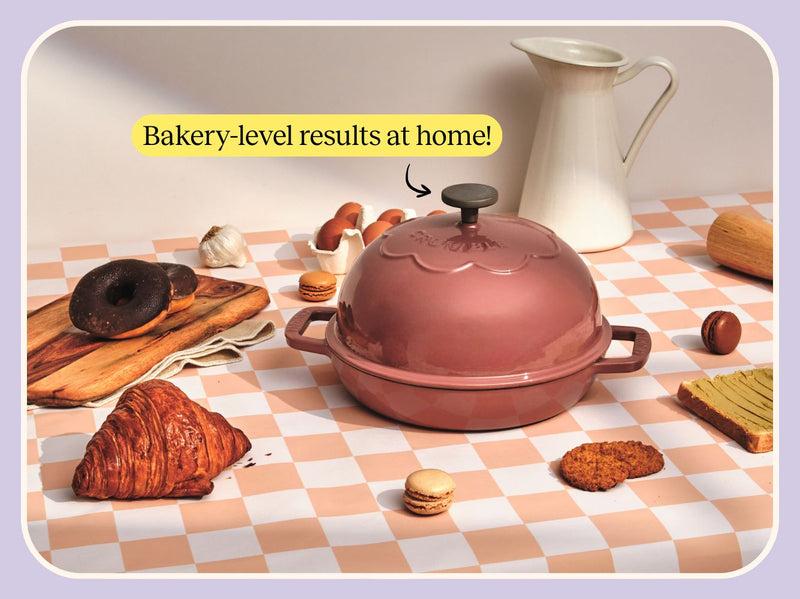

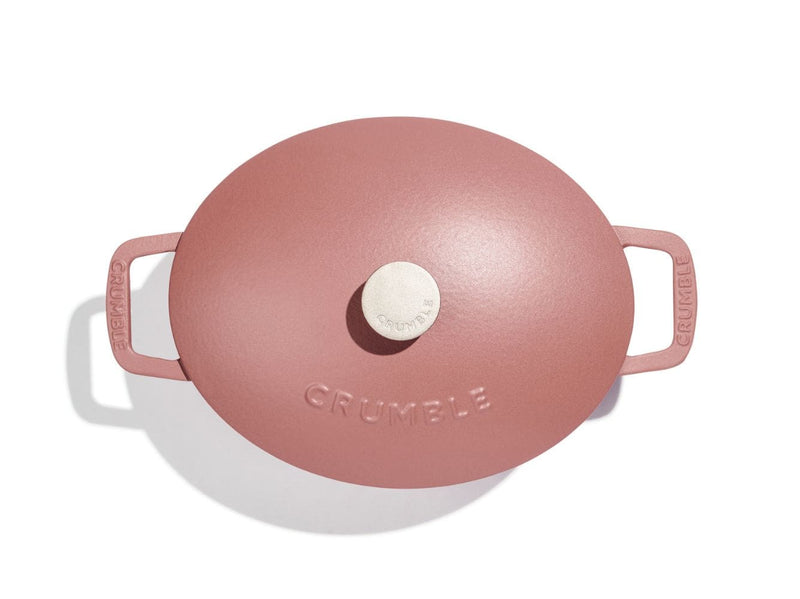
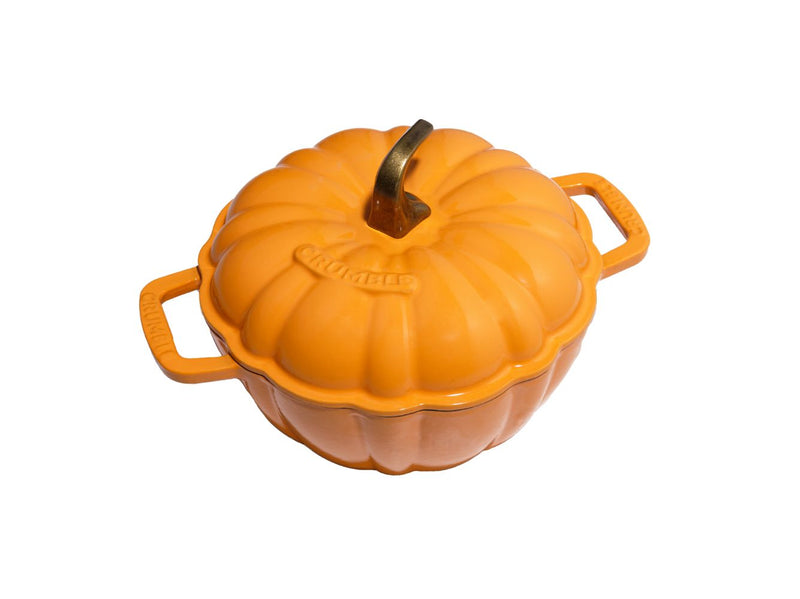


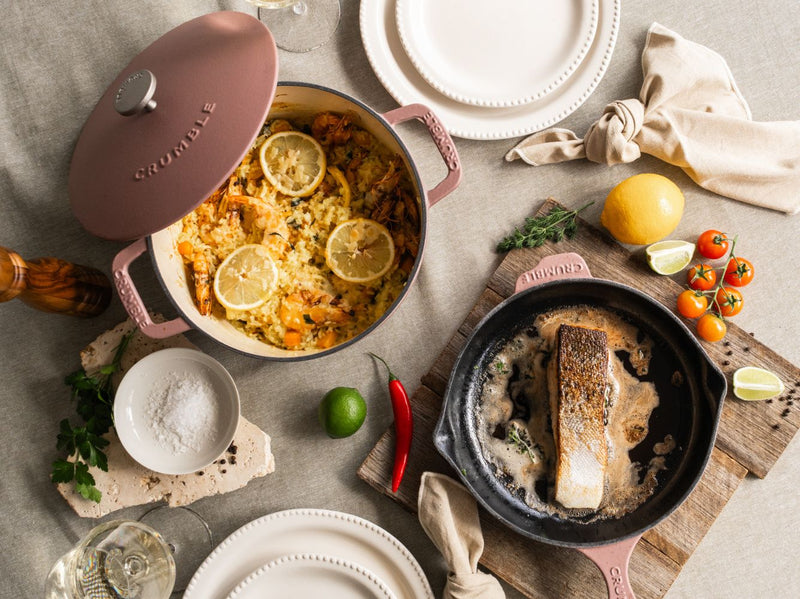
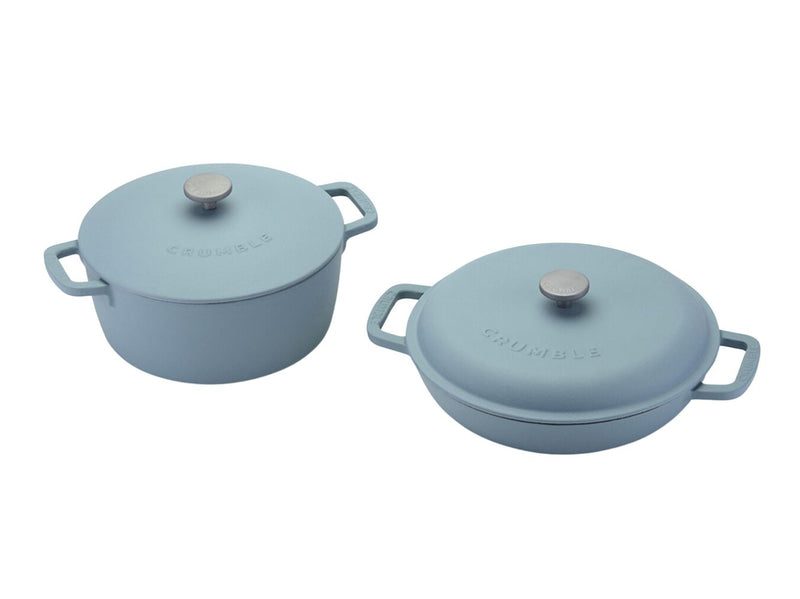


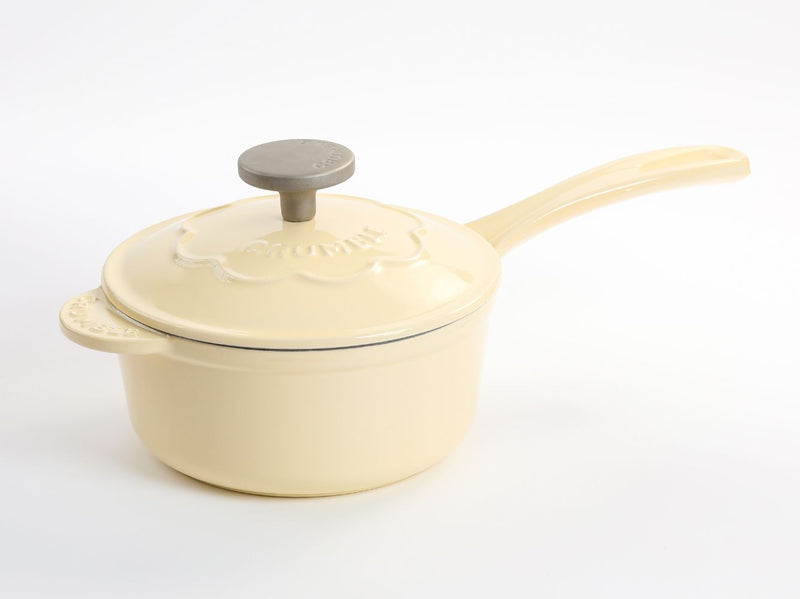
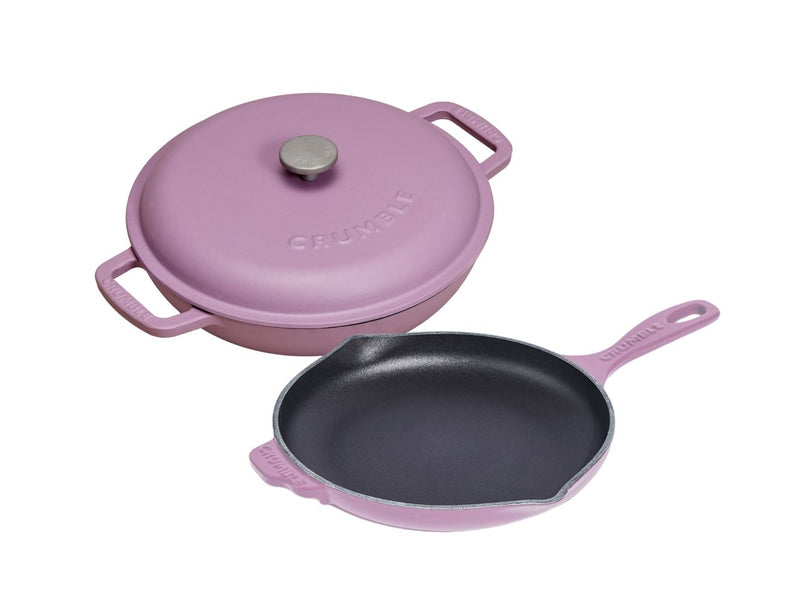
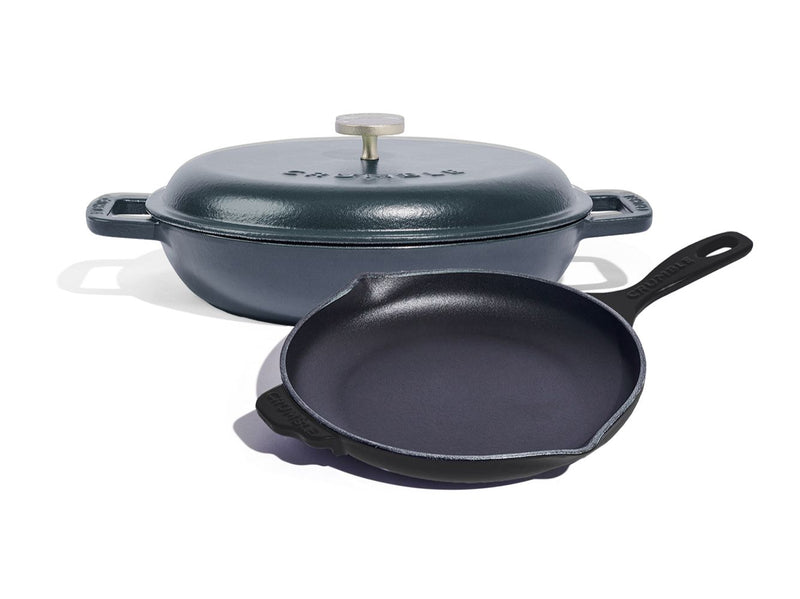
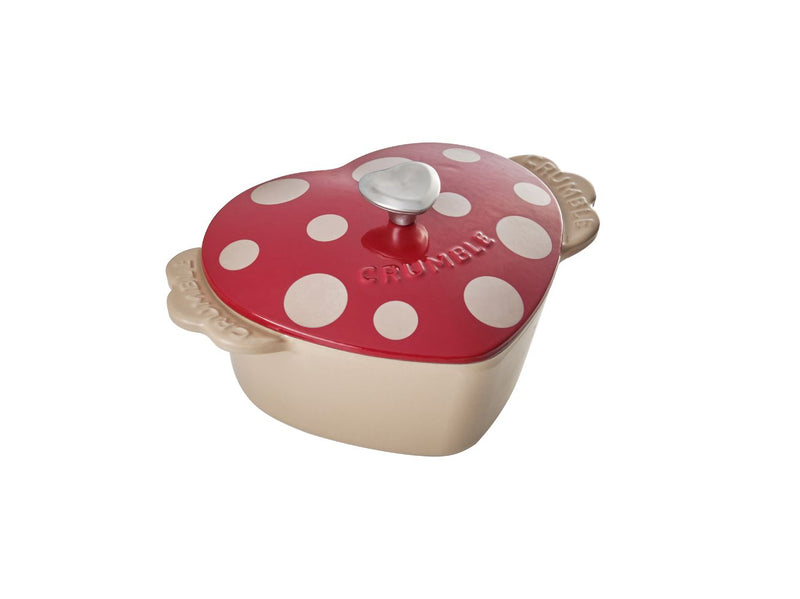
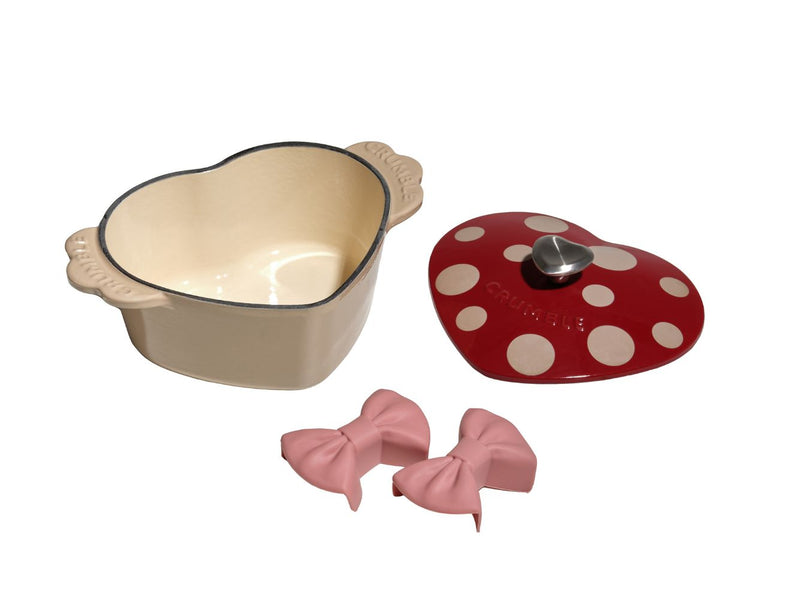
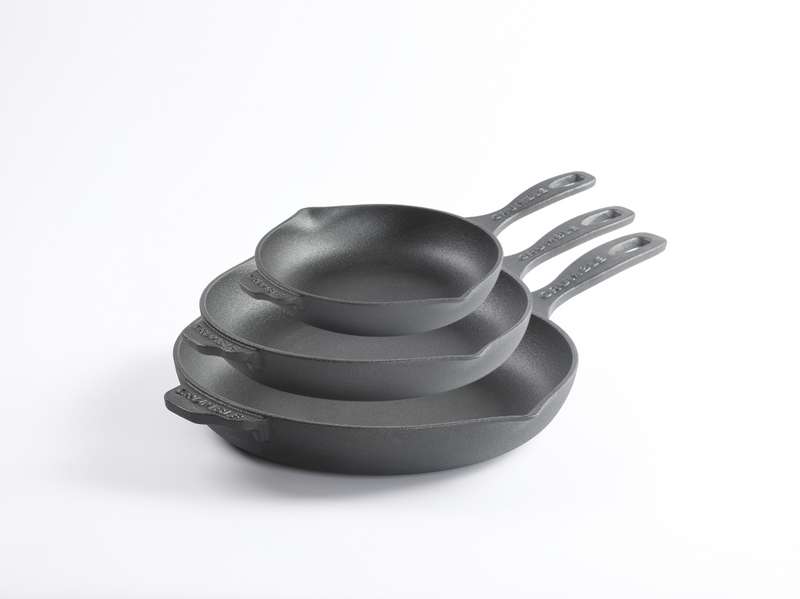
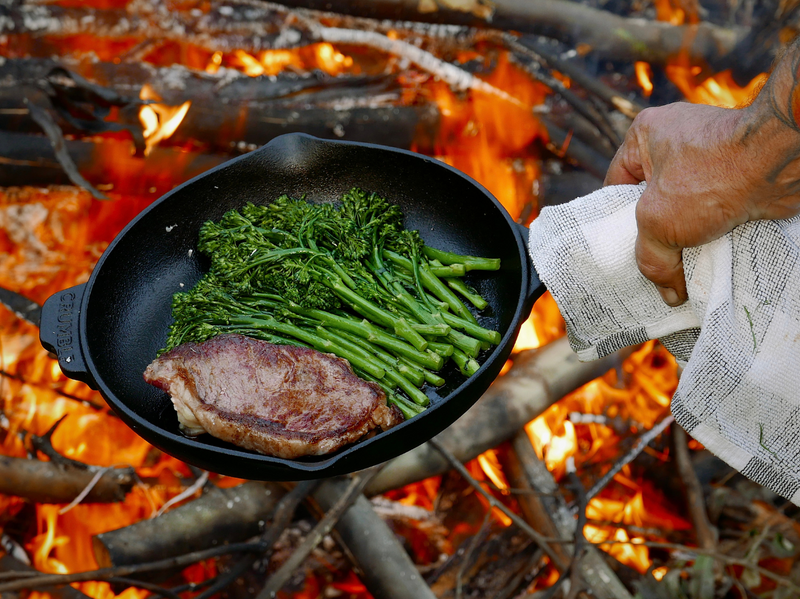
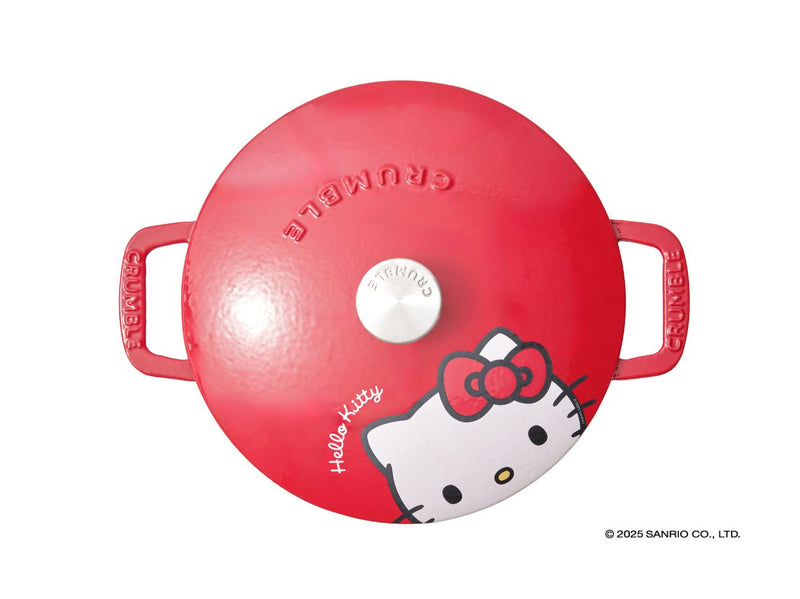
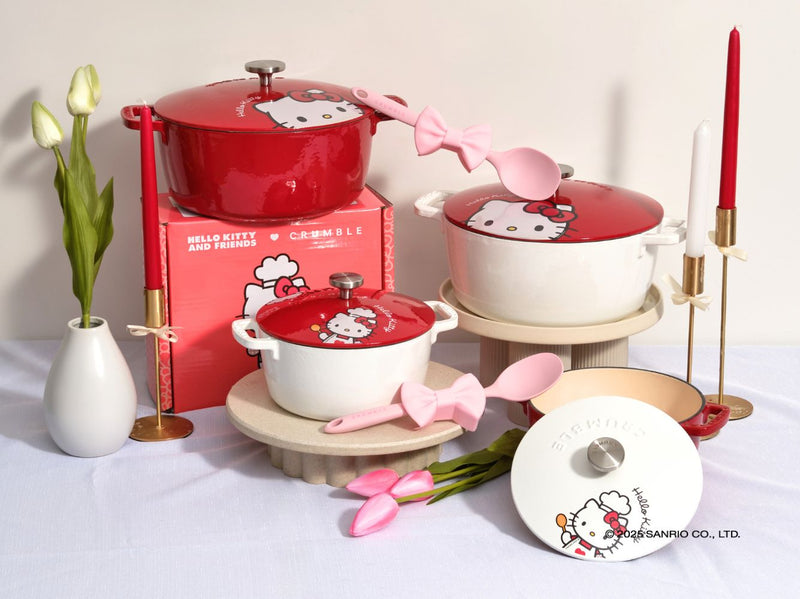
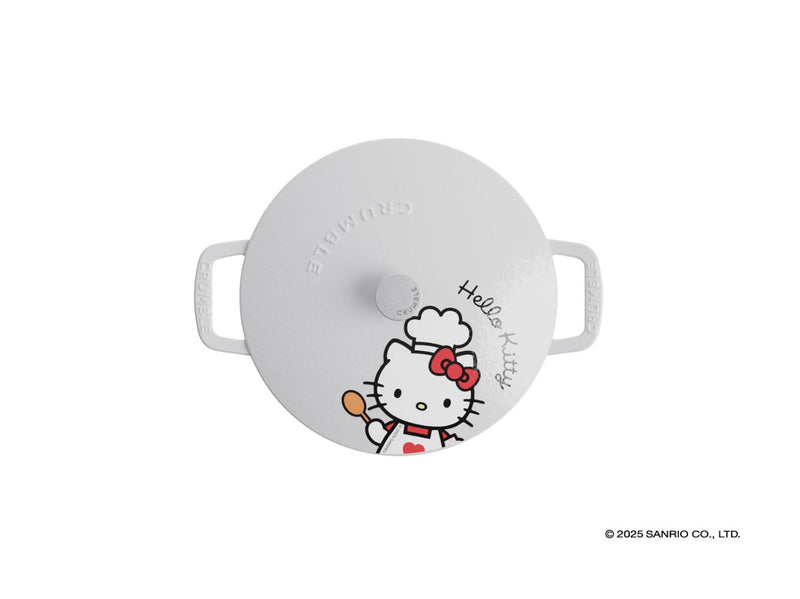
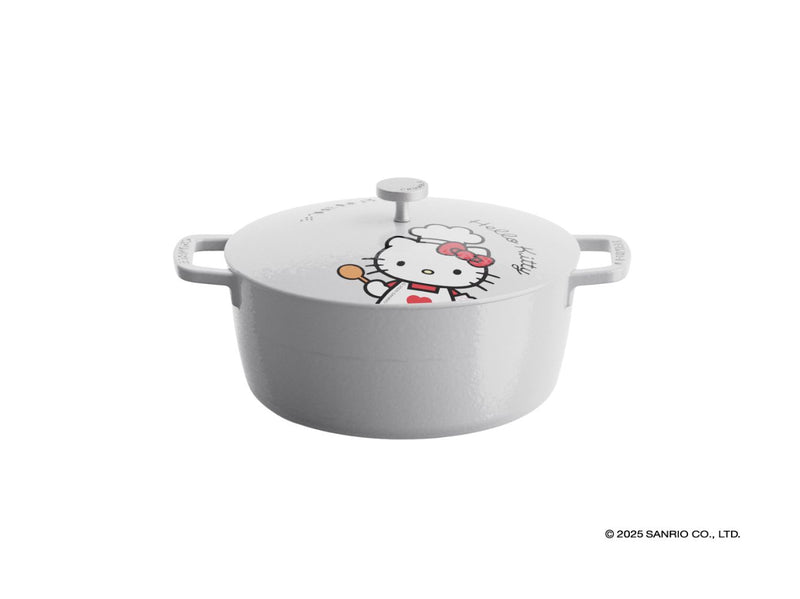
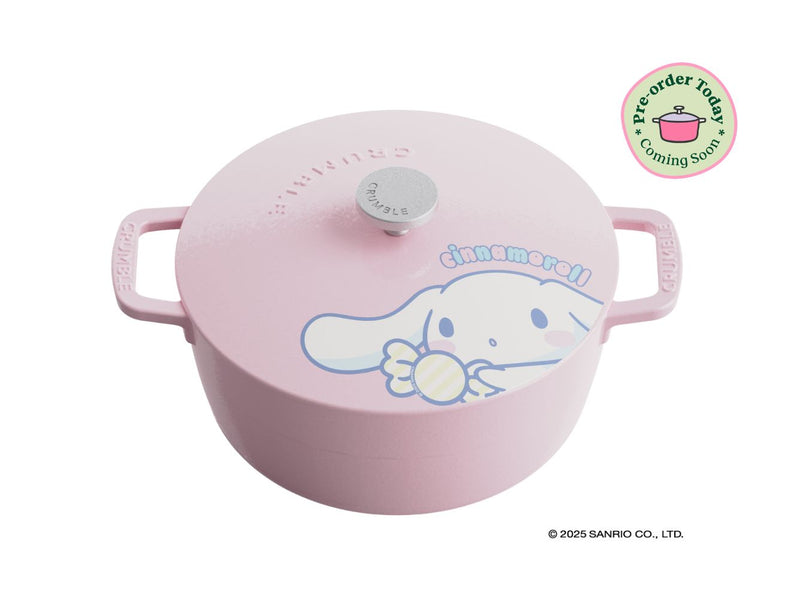
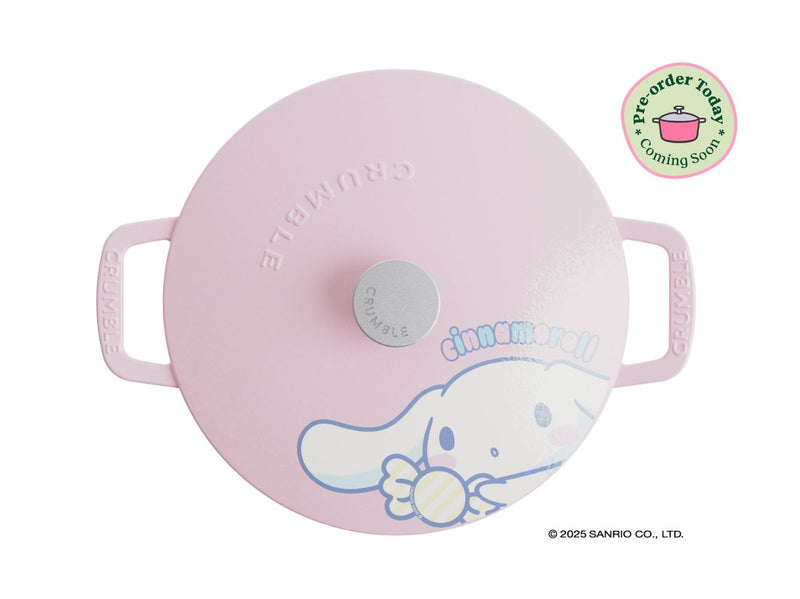
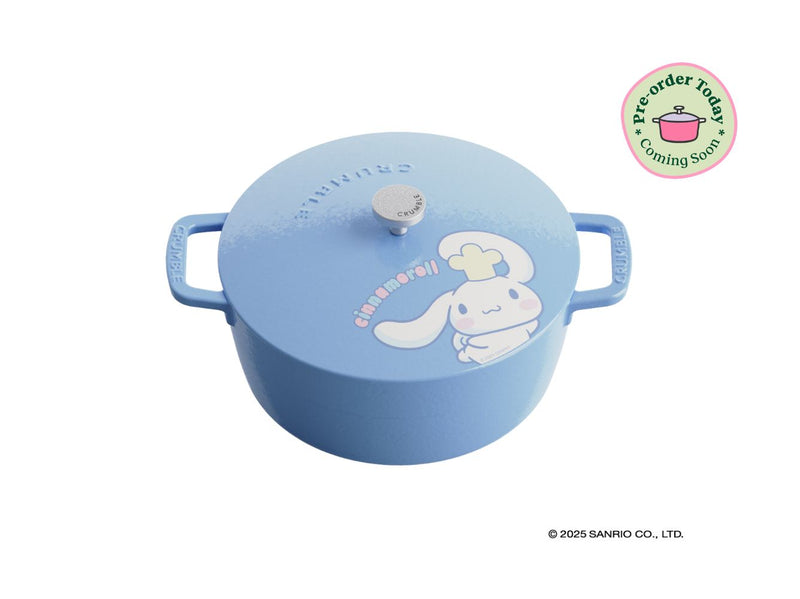
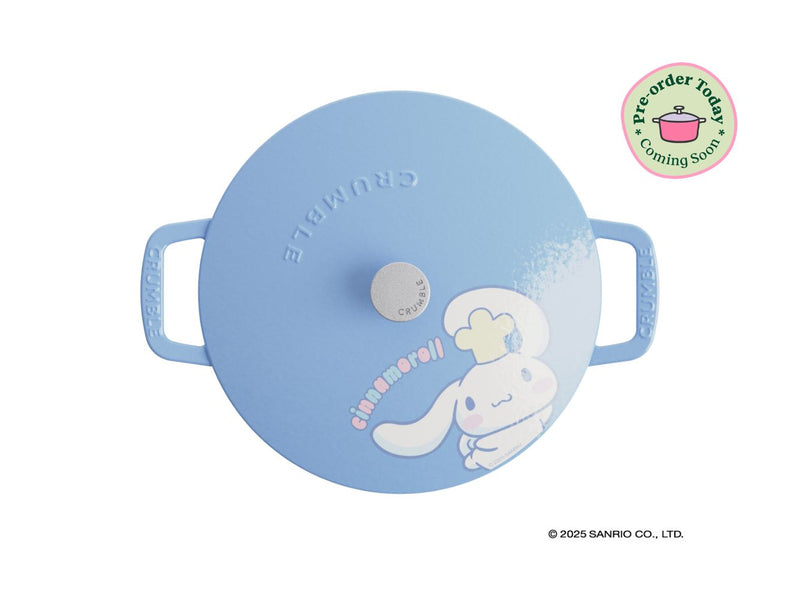




Not all cast iron cookware is the same, and that’s why we’ve got a range designed for different cooking styles. The Baby Dutch is great for small portions, side dishes, and bread baking, while the Classic Round Dutch Oven is a go-to for soups, stews, and slow cooking.
The Shallow Casserole gives you extra cooking surface, making it ideal for paella, risotto, and one-pan meals. If you’re cooking for a crowd, the Oval Dutch Oven can handle big-batch cooking and whole roasts. And if you love high-heat searing, the Classic Cast Iron Skillet is perfect for frying, crisping up potatoes, or even baking a giant cookie.
Crumble’s cast iron cookware is designed to hold heat better than almost anything else, meaning no hot spots and no uneven cooking. Whether you’re slow-cooking a stew in a cast iron Dutch oven, frying in a cast iron frypan or grilling, you can count on consistent results every time.
Over time and with more use, cast iron quickly develops non-stick cooking properties. Cooking with a little oil or butter helps prevent sticking and builds up that seasoned layer over time. If you’ve chosen our pre-seasoned cast iron, you can cook straight away, but adding a light seasoning now and then will only improve its non-stick performance.
Crumble’s enamel cast iron cookware is dishwasher safe, making clean-up effortless (we recommend not putting it in the bottom shelf!) Our pre-seasoned cast iron is also easy to maintain with a quick rinse and dry – no heavy scrubbing needed.
Every piece in our cast iron cookware collection is backed by a limited lifetime warranty and available with free shipping. Designed for home cooks who want cookware that performs beautifully and stands the test of time, this is cast iron cookware worth investing in.
Want to explore more? Check out our Large Cast Iron for family-sized meals, Medium Cast Iron for everyday cooking, or Small Cast Iron for compact, practical options. Looking for slow-cooked perfection? Our Casserole Pots have you covered.